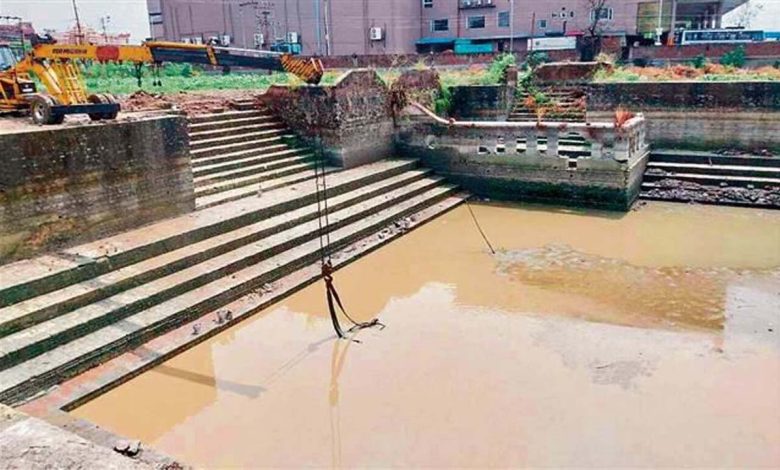In a first in 208 years, Gurusar Sarovar being desilted

The historic 208-year-old Gurusar Sarovar, located near the Sheetla Temple and Gurdwara Shaheedan Sahib in the city, is being cleaned and desilted for the first time ever.
The brick-lined sarovar, with separate bathing premises for men and women, is fed by groundwater that continuously seeps into it from the surroundings.
The facility had served as a bathing infrastructure and source of water for inhabitants of the area for centuries before piped drinking water was introduced by the state government in the district about 60 years ago. The historic sarovar, owned by the ‘Bedis of Una’, who are the descendants of Guru Nanak Dev, had been abandoned for the last many decades till the family decided to rejuvenate it with the help of kar sewaks from Una and the adjoining areas of Punjab.
Una was part of Punjab till 1966 and according to the District Gazetteer of Hoshiarpur, published in 1884, Baba Kaladhari Bedi, a descendant of Guru Nanak Dev, had left Dera Baba Nanak in Gurdaspur and after wandering in the Jullundur Doab for some years, he finally settled in Una. He attracted a crowd of followers, who flocked to hear his eloquent disquisition on Guru Granth Sahib. He soon emerged as a prominent spiritual leader who also led the struggle against the British in the region.
According to the Gazetteer, Una was part of the Jaswan Princely State and in the year 1804, Raja Ummed Singh, who ruled the state from 1800 to 1849, granted the Una Taluka to the Bedis. This grant was confirmed in 1872 by Maharaja Ranjit Singh.
At present, Baba Sarabjot Singh Bedi lives with his family at ‘Quila Baba Bedi Sahib’ in Una city and the family owns many properties granted to their family by the rulers of the erstwhile princely state.
Baba Amarjot Bedi, son of Baba Sarabjot Bedi, said the sarovar had been constructed between 1816 and 1824.
He said that the historic sarovar will be rejuvenated, renovated and preserved. He said it is being cleaned manually as well as mechanically with the use of heavy lift machinery. He said after 12 days of work, about 1.5 ft of silt had been removed, exposing natural streams of clean water flowing into the sarovar from the side walls.





